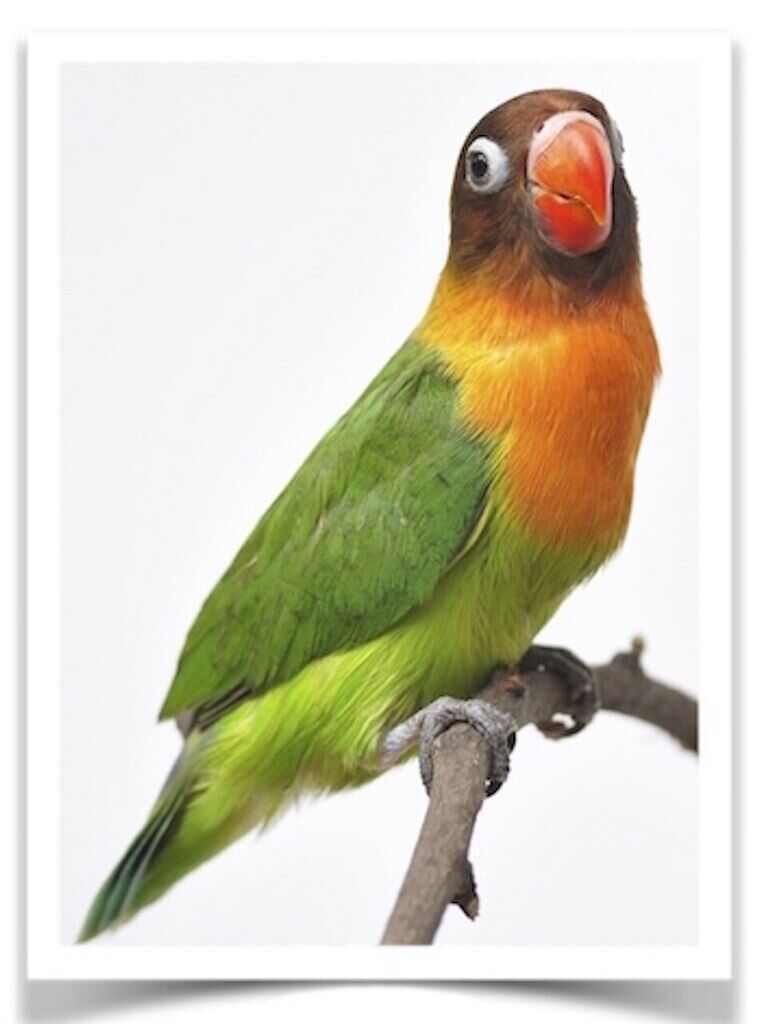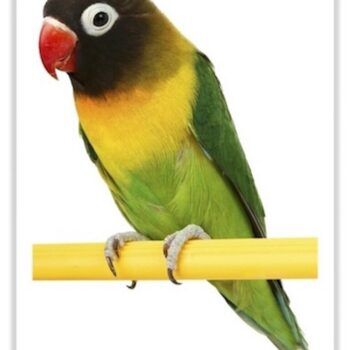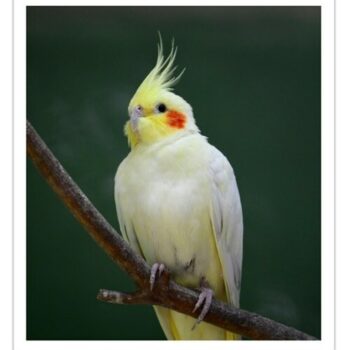Buy Lovebirds – Fischer’s Online
Fischer’s Lovebirds are popular lovebirds for sale by bird lovers as their ringed eyes and desired chirps are hard to resist! Lovebirds are one of nine species of the genus Agapornis (Greek: αγάπη agape ‘love’; όρνις ornis ‘bird’). They are a social and affectionate small parrot. Eight species are native to the African continent, and the grey-headed lovebird is native to Madagascar. Their name stems from the parrots’ strong, monogamous pair bonding and the long periods which paired birds spend sitting together. Black-winged lovebirds also eat insects and figs, and the black-collared lovebirds have a special dietary requirement for native figs, making them problematic to keep in captivity. Lovebirds are among the smallest parrots, characterized by a stocky build, a short blunt tail, and a relatively large, sharp beak. Provided with adequate space, a stimulating environment, and appropriate nutrition, a lovebird can become a cherished companion parrot. They love to snuggle and often preen their favorite people. Establishing a bond with gentle handling is important. Fischer’s lovebirds fall into a group known as the eye-ring lovebirds, attributed to the white ring around their eyes. They are smaller than the peach face and masked lovebirds, and have a distinct, high-pitched chirp. Buy Lovebirds – Fischer’s Online
Geography: Africa
Song / Call: Click for Fischer’s Lovebird Song
Size: 6″
Life Span: 10-15 years
Sexing: Monomorphic (visually hard to determine sex)
DNA Testing
If there is no gender option listed for a bird on our website, that particular species is ‘monomorphic’, which means we’re unable to determine gender without purchasing DNA testing. DNA testing is an additional $149 per bird to guarantee preferred gender. DNA testing may add an additional 3-6 plus weeks to estimated delivery time to allow for gender results. See our FAQs for more info.
Temperament: Fischer’s Lovebirds tend to be the more aggressive of lovebird types but can be calm, laid-back and not as noisey as the Peach-faced Lovebird. Buy Lovebirds – Fischer’s Online
Breeding: Fischer’s lovebirds are very sensitive, and when breeding, will abandon the nest if bothered as they like their privacy. When building nests, Fischer’s lovebirds will drag Nesting Materials into their nest box, where the female will sit and carefully weave her tunnel-like nest.
Diet: Lovebird Seed, Oat Groats, Cuttlefish Bone, Dried Egg Food, Veggies, Fruits
buy exotic birds for sale, buy finches for sale, birds for sale online, pet birds online, buy African grey for sale, buy exotic monkeys for sale, lilac crowned amazon for sale, buy bronze mannikin, buy counterfeit money for sale,buy counterfeit indian rupees for sale,counterfeit indian rupees for sale, fake indian rupees for sale, buy indian rupees online, buy adderall online, buy ambien zolpidem online, icals buy research chemic online, buy wood pellets for sale, buy scannable bills for sale, scannable counterfeit money for sale, buy undetectable counterfeit money, buy counterfeit money online, buy containers for sale, buy kittens for sale, buy roxicodone online, buy parrots for sale, k2 spices for sale, buy gbl for sale, buy pure gbl online, gbl for sale euro, buy synthetic cannabinoids online, buy k2 spice for sale, buy research chemicals online, buy cannabinoids for sale, buy research chemicals, buy counterfeit money online, pills for sale, buy counterfeit money for sale, ssd chemicals online, parrots for sale, synthetic cannabinoids for sale, wood pellets for sale, pharmaceutical pills online, buy research chemicals,, ssd chemicals online,





